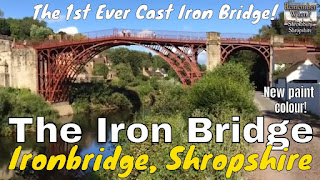Bayston Hill, Shropshire - With the Largest Number of Residents of Any Village in the County History and Facts
Bayston Hill has the Largest Population of Any Shropshire Village.With over 5,000 residents in the 2011 census Bayston Hill is Shropshire's most populated village.
At just 3 miles from Shrewsbury centre it is easy to think of it as a dormitory village, but it has origins in the middle ages, borders on lovely Shropshire countryside, has 3 pubs, 2 churches, schools and a public library.
Lyth Hill to the south of the village is within walking distance from the centre, and is a major Shropshire attraction, especially for dog walkers, with open views to south Shropshire from the public parkland which follows top of the escarpment along the hillside.
There is remaining evidence of both an ancient British Iron Age hillfort and a Roman settlement located on the village's high grounds.
In the Middle Ages the heavily wooded Bayston Hill and Condover area was established as a Royal hunting forest. A busy rope works, complete with its own windmill built in 1835, existed on Lyth Hill in the 19th century.
The rope industry supplied the many mines, farms, and barge owners of those times in this area. A church was built alongside the village glebelands in 1843 to serve the local miners, quarrymen and railway navvies.
Standing on the south east side is the village's oldest archaeological site: a mounded Iron Age bivallate hill fort.
It's relatively low lying for such a structure and oddly named with the Danish name of The Burgs, but probably was not called that until sometime between the 14th and 16th centuries.
The village was surveyed for the Domesday Book during the year 1086, when it was called Begestan, and William Pantulf, an Anglo-Norman nobleman, held land there.
One final odd fact to ponder about Bayston Hill is that although the railway runs right past the village, Bayston Hill has never had its own railway station.
If you found this video interesting, encourage me to make more, by "Liking", and "Sharing" it.
This presentation contains images that were used under a Creative Commons License. Click here to see the full list of images and attributions:
https://link.attribute.to/cc/501568
_____________
Watch this video on YouTube here:
https://youtu.be/pNxc0ZI0FqI
_____________






